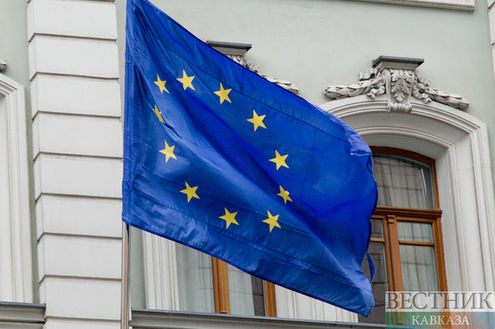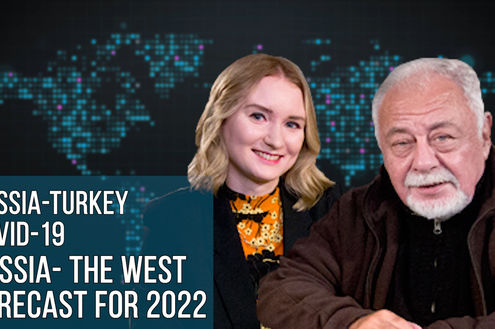The talks in Vienna are over, leaving more questions than answers. We can hardly say that any of the sides of the conflict left the meeting as a winner. Moreover, the task which was set by international mediators was rather ‘technical’ – to stabilize the situation on the frontline, which remained unstable after hostilities in early April, and to provide revival of negotiations. Presence of the Russian Foreign Minister Sergey Lavrov and the US Secretary of the State John Kerry raised the profile and importance of the meeting that was a significant factor of its holding in general. In the final analysis, the agreement on respecting the ceasefire regime, which was signed by heads of the General Staffs of the Armed Forces of Armenia and Azerbaijan under Russian mediation in Moscow on April 5th, was confirmed at the top level in the Austrian capital.
All other statements are just feedback and cautious intentions. Despite ‘extreme elation’ of the American cochairman James Warlick about results of the talks, no certain agreements were reached at the meeting. The Kremlin represented by Dmitry Peskov, the Press Secretary of the Russian President, expressed cautious optimism. It is known that introduction of mechanisms of investigation of incidents along the Contact Line between the Armenian and Azerbaijani troops, as well as a return to the substantial talks were central topics of the agenda. From this point of view, the Vienna talks were characterized as diplomatic intelligence because the sides were trying to feel changes in positions after the April hostilities.
For example, the Armenian President Serzh Sargsyan expressed a wish after the talks to implement monitoring mechanisms ahead of the next meeting between presidents (a date and a place will be determined in June). Apparently, the Azerbaijani side will have serious objections against it. I remind you that official Baku insists on implementation of such mechanisms as one of elements of a peaceful settlement, but it must not substitute the negotiations and encourage cementation of status quo. During his recent visit to Berlin, the Azerbaijani Foreign Minister Elmar Mammadyarov stood for these positions.
The point is that the monitoring, according to an Armenian view, is the first step by Azerbaijan toward voluntary abandonment of an opportunity of returning the occupied territories under its own control by military means. It explains the eager interest of the Armenian side to implementation of these mechanisms. In its turn, Azerbaijan focuses on a necessity to implement the substantial talks, i.e. a start of deoccupation of its territories and taking the issue of the Nagorno-Karabakh status off the table – it must be an issue of the indeterminate future. Thus, the central dispute remains the same: Baku is trying to change status quo without an immediate resolution of the NK status; Yerevan is resisting this and going on seeking for an opportunity to preserve and strengthen the situation which emerged after the First Karabakh war, and it is going to use building numerous monitoring points of the OSCE along the frontline, withdrawal of snipers, and other steps. Probably, the complex of measures will encourage reduction of tension on the frontline, but it won’t provide a stable peace and solve the problem of Armenia’s permanent military aggression against Azerbaijan, which will continue till the last Armenian soldier leaves the Azerbaijani territory within its international recognized borders. By the way, a political science professor of the University of Siegen (Germany), Rüdiger Kipke, told Vestnik Kavkaza that after implementation of mechanisms of investigation of incidents on the frontline, activities of the international society on seeking for a way of a settlement of the conflict will become less intensive.
One of key questions for today is whether the fragile ceasefire between Armenia and Azerbaijan will be preserved till the next meeting between presidents. The fact that the Armenian President admitted losing a control over 800 ha of territories, as a result of the April war, right after the talks probably means that the Armenian side came to terms with the actual change of the frontline. I remind you that from early April, Serzh Sargsyan’s position has changed many times. At first, he insisted that ceasefire should have required a return to the positions before early April; however, later the condition was eliminated. In April, the Armenian President spoke about ‘200-300 meters’ of lost territories; today he admitted a loss of 8 square kilometers. “I tell you Azerbaijanis didn’t liberate any territories. They occupied a small piece of land in the north and south, they occupied 200-300 meters, losing one soldier for each meter,” Sargsyan said at a meeting with OSCE ambassadors in early April. Yesterday, Sargsyan announced a different data. “The Armenian forces that had 800 thousand ha of a safety zone lost 800 ha. These territories have no strategic importance.” A lot has been written about strategic importance of the territories (See Results of a two-day standoff on April 2-5th); I would only mention that after withdrawal of the Armenian Armed Forces, the residential areas of Talysh and Magadiz were actually left for mercy of the Azerbaijani army which occupied nearby strategic heights, and the majority of the population left the villages.
Excusing territorial losses of the Armenian army in an interview to the Armenian media, President Sargsyan pointed out that he didn’t find it necessary to sacrifice lives of ’35-40-80 patriots for these 800 ha.’ And here we must remember that Armenia has already lost 92 soldiers, 14 tanks, 4 infantry combat vehicles, 17 artillery items and MRLS, up to 20 items of soft-skin vehicles, and more than 10 trucks and vehicles (according to the official information of the Armenian side). Moreover, the Armenian side also lost (according to the official information) about dozen of military posts. Was it for ‘800 ha of strategically unimportant’ land? Furthermore, why did Sargsyan easily sacrificed dozens of soldiers and military vehicles, trying to return the lost control over the territories in early April, and now, a month later, he started caring about his soldiers?
Azerbaijan is now preparing for receiving Formula One in June and it is not interested in escalation of the conflict next month, at least till the end of the prestigious world race. On the days when attention of million people all over the world is locked on Baku which presents itself as a new tourist destination for Europe and the CIS countries, the Azerbaijani authorities will hardly want to spoil such an important event for the country’s image by a military escalation. Armenia doesn’t have such a restricting factor, and Yerevan will hardly allow a discount to Baku during preparing and holding Formula One. And, if anything, it won’t. Moreover, to support acuteness of the idea of implementing monitoring mechanisms before a new meeting between the Presidents, continuation of stirring up the situation on the frontline meets tactic interests of the Armenian side. Finally, criticism of the government, which is gaining a pace in Armenia and is connected with losing control over the territories in the context of Sargsyan’s statement about 800 ha, has been given renewed momentum. It is an additional factor for the Armenian war party to have revenge after April. From this point of view, guarantees of mediating countries, including Russia, the USA, and France, are becoming especially important.






